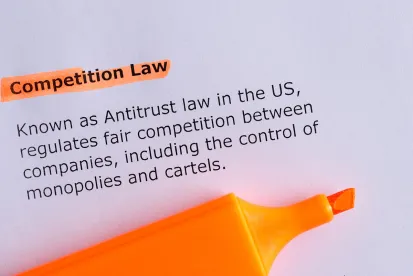No-hire or “no-poaching” agreements have recently come under increasing scrutiny by the federal government, as well as various state regimes. However, a recent Ninth Circuit decision upholding a no-poach agreement highlights the various hurdles an antitrust claimant will face in bringing such a claim.
In Fonseca v. Hewlett-Packard Company, Case No. 20-56161 (9th Cir. Oct. 14, 2021), the Ninth Circuit upheld the dismissal of a former Hewlett-Packard Company employee’s claims that the company hatched an unlawful no-poaching agreement with a competitor. The Court affirmed the August 2020 dismissal from the Southern District of California in a short, unpublished opinion referring to the lower court’s decision as “thorough and carefully reasoned.” The case highlights the importance of consistency between the antitrust allegations and the surrounding business context.
Plaintiff Bryant Fonseca is a former HP employee who was laid off in 2017 under the company’s U.S. Workforce Reduction (“WFR”) plan after working for the company for about 36 years. He asserted age discrimination claims on a class-wide basis and antitrust claims under the federal Sherman Act and the state Cartwright Act, among other claims.
Fonseca’s antitrust theory was that HP entered into an unlawful no-poaching agreement with competitor 3D Systems. The impetus for the agreement, according to Fonseca, was the movement of Vyomesh Joshi from HP to 3D Systems, where he landed the top job of CEO and allegedly began luring away some of HP’s top talent. Fonseca claimed the two companies ultimately agreed to a “cease-fire” agreement to stop hiring each other’s workers, and this hurt the job prospects and salaries of HP employees, including his.
The district court was not persuaded. It granted a motion to dismiss on the antitrust claims and the California Business & Professions Code § 16600 claims, finding that Fonseca failed to specifically allege anticompetitive conduct stemming from an independent decision or from an agreement.
Fonseca claimed that the no-poaching agreement stemmed from a 2016 phone call in which an HP executive asked Joshi to stop hiring away HP employees. Fonseca alleged that 3D Systems ultimately agreed to comply, as long as the arrangement was mutual. The district court found these allegations inadequate for two reasons. First, they lacked sufficient detail. The complaint did not state when in 2016 the call occurred, where the executives were during the call, who reported the phone call, or whether a witness to the call exists. Nor did the complaint allege the existence of any corroborating documents.
Second, the circumstances surrounding the call contradicted the allegations of an agreement. Fonseca’s theory was that both companies agreed to stop poaching, but there was no claim that HP ever actually poached any of 3D Systems’ employees, so 3D Systems would not have had any incentive to strike a no-poaching deal with HP. As the district court put it, “3D Systems would not have had any need for a ‘cease fire’ since HP had not aimed any ‘fire’ at 3D Systems.” A no-poaching agreement would also be inconsistent with Fonseca’s allegations that HP directed its employees to report any offers made by 3D Systems, and penalized HP employees who accepted offers by stripping them of severance benefits. If a no-poach agreement were in place, HP would have had no need for such protective measures.
The district court also found Fonseca failed to allege that HP and 3D Systems’ conduct was an unlawful conspiracy rather than just independent conduct. Where allegedly anticompetitive action is equally likely to be independent or collusive, the Ninth Circuit requires the plaintiff to plead “plus factors” making an agreement more likely.
None of Fonseca’s “plus factors” hit the mark. Fonseca argued that the two companies stopped hiring each other’s employees, but there were no allegations that HP ever actually hired employees from 3D Systems. Fonseca argued they shared pay scales to avoid a bidding war, but the pay scales were already available online at third party websites, so there was no need to exchange them. Fonseca argued that, soon after the no-poaching agreement went into effect, 3D Systems employees began to complain online about no longer receiving competitive wages, but these allegations were conclusory. Lastly, Fonseca alleged that HP used the WFR plan as a “scare tactic” to discourage employees from seeking employment at competitors, but this did not demonstrate unlawful parallel conduct by the two companies. Moreover, under the WFR plan, a HP employee who joins a competitor would still receive the severance benefits as long as the employee informed HP.
Having found no plausible, fact-based allegations to support the existence of the no-poaching agreement or any “plus factors,” the district court dismissed Fonseca’s antitrust claims. The Ninth Circuit affirmed, explaining that the district court properly stated and applied the law.
Fonseca v. Hewlett-Packard Company drives home that an antitrust claim arising from an alleged no-poach agreement must contain specific and contextually plausible allegations of anti-competitive conduct. Innuendo and dubious inference will not be enough.


 />i
/>i

